Discover Why Presa Canyon is This Volunteer’s “Happy Place”
By: Kelly Timmons Volunteer, Seminole Canyon State Park & Historic Site
SCSP&HS is open to the public. Tours run daily, and are currently following COVID protocols. Check the TPWD website for more details.
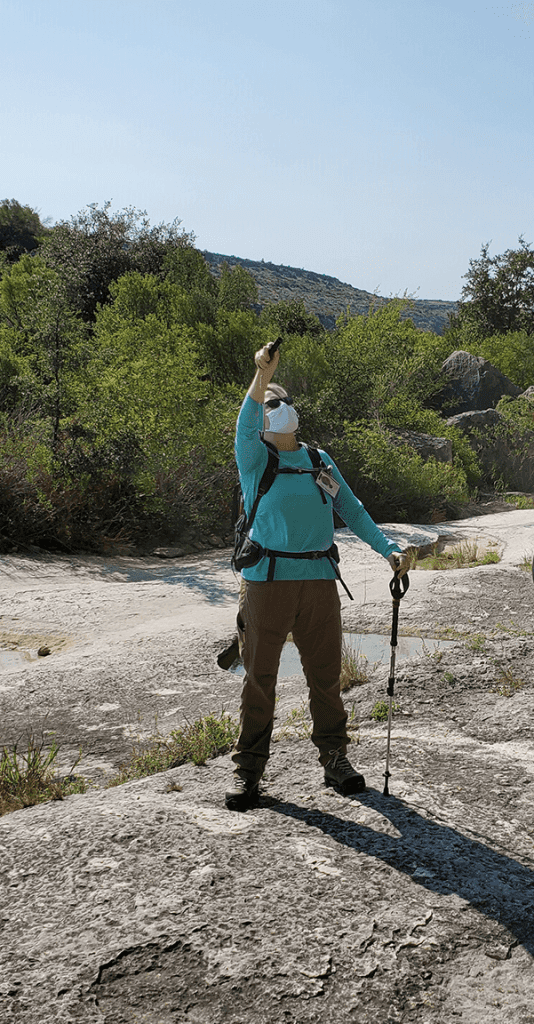
I am Kelly Timmons and I have volunteered at SCSP since 2016. I retired from the AF in 2006. I was happy to trade a uniform for hiking boots and a walking stick. SCSP and the Lower Pecos region is my “Happy Place”. I lead tours of Fate Bell Shelter, Presa Canyon and the Upper Canyon. I love the rich layers of history, ecology, archaeology and geology the region has to offer.
By far, my favorite tour, in Seminole Canyon State Park, is Presa Canyon. Specifically, Black Cave, the highlight of the 8-hour Presa Canyon guided tour. The Presa Canyon tour is long and rigorous and the reward is seeing first-hand 2000-4000 year old pictographs in near pristine condition.
The first time I toured Presa Canyon I was newly retired from the Air Force, in my late 40’s and thinking I was ready for a trek on the wild side. I was told it was a 6-mile hike, round-trip (maybe as the bird flies but definitely not as a hiker). As we pulled up to the visitor center, we watched a tour bus arrive and disgorge 20 or more “blue haired” ladies and gentlemen. In my mind this foreshadowed a long day waiting for people who probably should not be out here on an 8-hour hike. To our chagrin the entire tour waited on us all day long. Now I work with a trainer year-round to be sure I will be like those “blue hairs,” active and fit into my 80’s.
The hike began downhill, entering the canyon from above, then easily traversing the cleanly swept floor of the canyon and stepping over water rivulets carved into the limestone by drainage and natural springs. Spotting ferns in the basins and canyon walls was a special surprise. Our first break came at a colossal balanced rock near the bottom of the canyon. We took turns posing as Atlas or Sisyphus beside the rock while catching our breath and sipping water. The break gave us time to stare in awe at the canyon walls towering over 250 ft above us, blackish gray and orange-yellow, flecked with streaks of white, and long black lines tracing water paths down the walls.
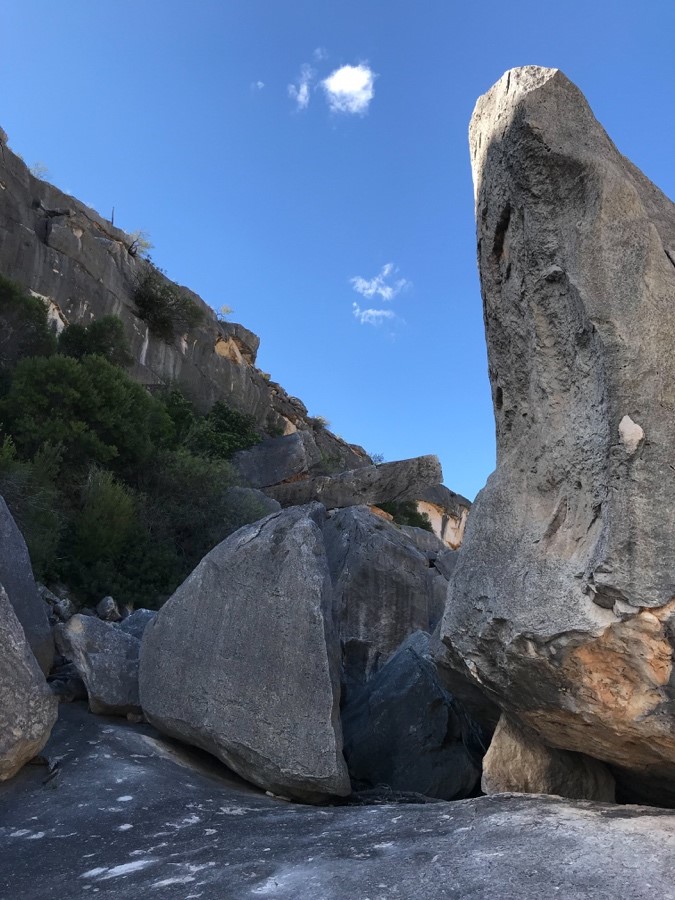

We crisscrossed the canyon floor navigating a way through and around mounds of debris and house-sized boulders. After sneaking along one side of the wall, the canyon opened up and a beautiful stream cut through the canyon floor, meandered, then plunged down a natural slide into a long pool. I could almost hear the voices and laughter of children through the ages playing in the natural water park. Absolutely magical.
Seminole Canyon is a main drainage to the Rio Grande. It is not a constant flowing river. Many small canyons drain into it before it joins the Rio Grande. We headed up one of these canyons and into Presa Canyon. High above us our guides pointed out a natural arch near the top of the canyon. Natural arches occur in the Lower Pecos though they are not as abundant as seen in the sandstone in Arches National Park, or the other famous parks in Utah. The canyon walls, nevertheless, are striking, rising 200-300 feet above the floor.
Our first rock art is on a steep wall and easily overlooked. It is the premier and maybe “definitive” example of “Red Linear” style rock art. Tiny red stick figures adorn the panel, sometimes seated and grouped together. Unlike the “Pecos” style rock art, it is only one color and is gender specific. My favorite pictograph of all is the small “Red Linear” dogs in the photo at left.
Continuing upstream in Presa Canyon is a bit of a trudge. This canyon is full of debris, boulders lie in hundred-yard-long fields covering the canyon floor. Brush often hinders the easiest route through the boulder fields and the route varies each time dues to flash floods, and plant growth. Passing a huge live oak always give me motivation to press on as we are nearing Black’s Cave, our destination.
As a huge shelter looms before us we turn to see a bizarre figure on the wall. This “Pecos” style figure is often referred to as the clown, for its polka dotted body. It is badly faded and I have included an enhanced photo to see more of the detail. More about photo enhancing in another blog.
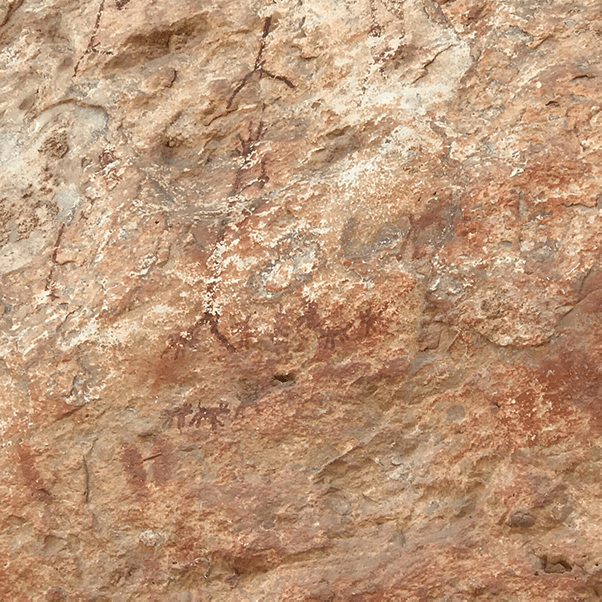
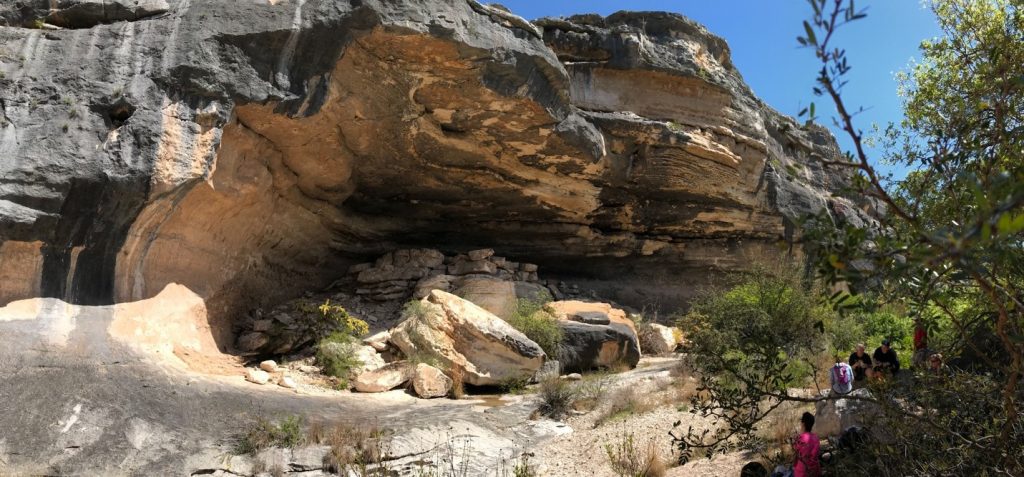
At Blacks Cave we take a well-earned rest and eat lunch in the shade. Blacks Cave has a huge rock fall in its center. There is a huge beehive hanging from the ceiling.
The cave has a lot of art. Some incredibly vivid, some barely visible and everything in between. You need to stay still and look until more becomes visible. Beneath large Pecos Style works are smaller red figures, and on the ceiling are Pecos Style anthropomorphs. Unlike several shelters I have visited the walls of Blacks Cave are not covered in paint. The most impressive pictographs standout starkly on a light tan wall.
The return trip to the visitor’s center is relaxing though long. We usually stop at one or more other sites if the group is willing and we have the time. The tours are given October through April and daylight can be short in Dec and Jan.
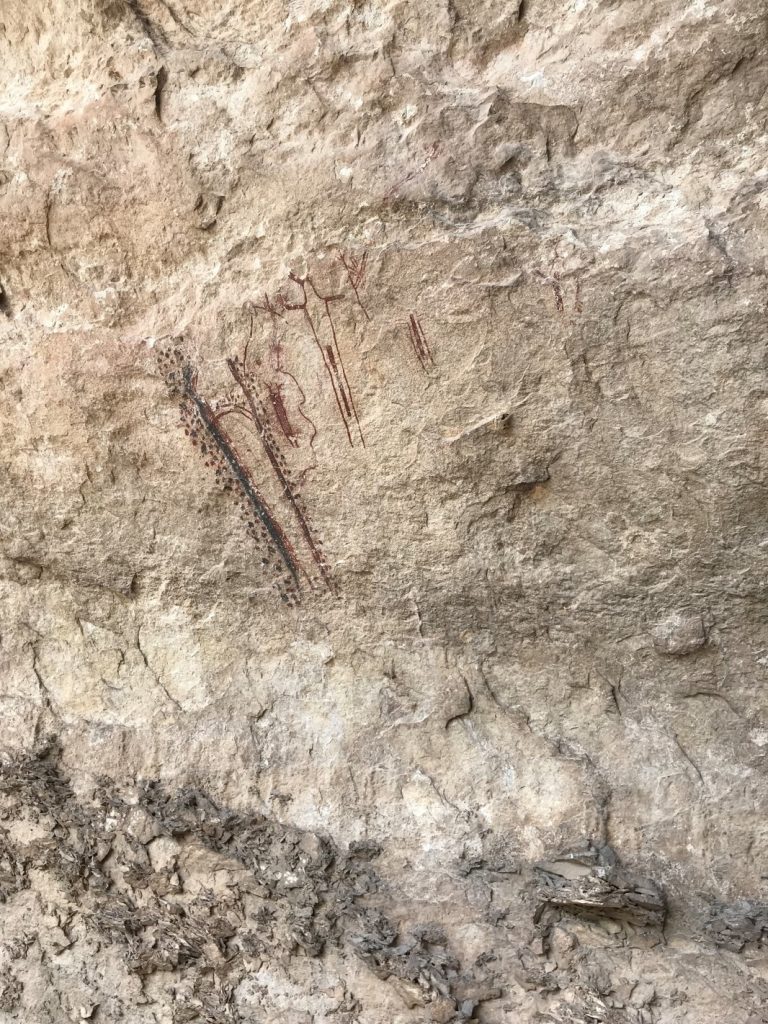
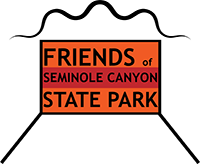

No responses yet